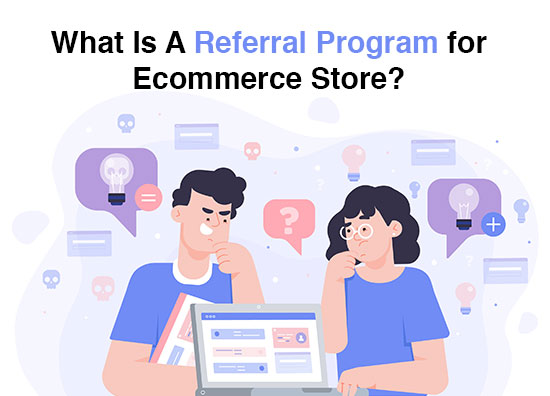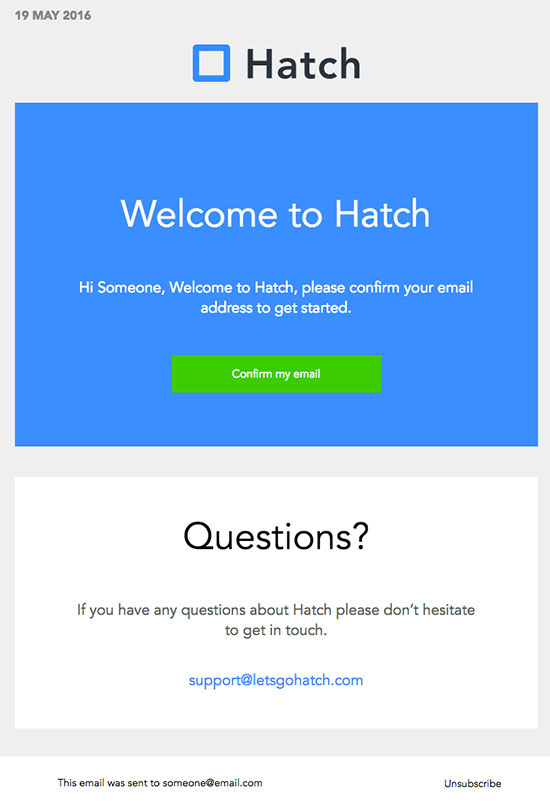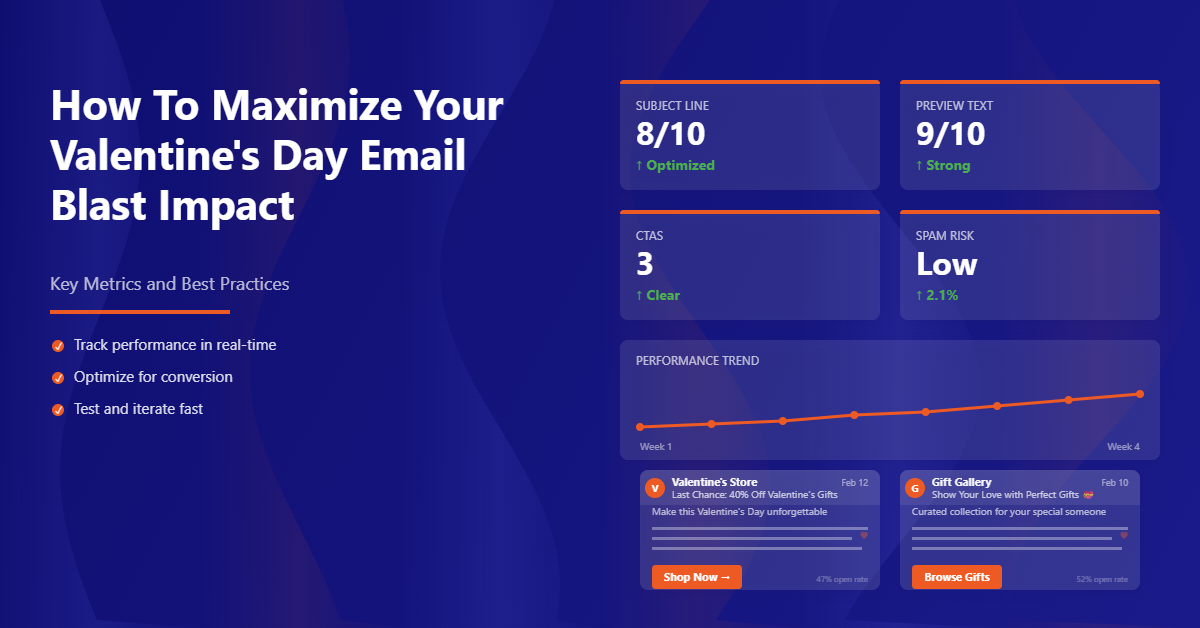The one mandatory step a brand must take when they enter the marketplace is to promote their product or service to their audience. There are many promotional tactics, but one validated tactic is referral traffic, followed by all brands, especially eCommerce stores.
The referral marketing program is a comprehensive strategy that encourages passionate customers to drive new customers by referring your business to their internal network while also supporting internal linking opportunities across your website to enhance visibility and engagement. You might have a question: are referral and word-of-mouth marketing the same?
Let me tell you, it may look similar, but it is not. There is a sleek difference between them; referral marketing is “deliberate,” whereas word of mouth is “spontaneous.”

What Is A Referral Program for Ecommerce Store?
A referral program is one of the most powerful marketing strategies that major eCommerce brands use to attract new customers. To define it shortly, this works in two ways: incentivizing the existing customers to promote the product to their friends and family and encouraging the new visitors to become new customers.
Referrals from reliable friends and family are significantly more persuasive than any advertiser do you agree with it?
Let’s see some interesting statistics that back the above statement:
- It is said that 49% of the US consumer’s top source of brand awareness is their friends and family.
- According to Nielson, 92% of customers trust referrals from the people they know better.
- A business can bring an average of 20,000 new email addresses per month through a referral program – Annex Cloud.
Now with no doubt, a referral program can generate referral traffic that is a 3-5x higher conversion rate than any other channel. These referral program statistics above will help you to evaluate and implement it better for your eCommerce business to turn the traffic into purchases.
Why Do You Need A Referral Program for Your eCommerce Brands?
One of the challenging aspects of every business is to find a proper customer acquisition channel. Acquiring high-quality customers through referral traffic is possible only through building a solid referral program.
However, unlike other acquisition channels where you directly appeal to new customers, referral programs let your valuable existing customers bring new buyers to your brand.

This significantly reduces your cost in the referral traffic of acquiring new customers and increases customer retention. Implementing a referral program is a cost-effective and lucrative marketing strategy for your brand with many benefits.
Even if your brand isn’t large yet, you can still explore referral programs for small businesses to find simple, practical, and effective examples and tips that fit your scale while still driving real growth.
Now, let’s look into the benefits of bringing referral traffic through the referral program;
1. Creates a Strong Customer Base:
Customers become more loyal to the brand based on their trust and relationship with the particular brand. According to Gen Z statistics, 82% of people trust their friends and family referral when it comes to the product.
So, here the referral traffic provides enticing deals to attract more and more new customers, thus building a solid customer base for the brand.
2. Improves Customer Interaction and Engagement:
Using referral programs such as coupons, discounts, and so on improves consumer interaction and engagement with your business. In the form, when your existing customers share the referral link via email or social platform with their network, that brings in more referral traffic to your business and transforms it into high-quality leads for the business.
3. Cost-Effective Approach:
Among the other customer acquisition channels, a referral marketing program is one of the most cost-effective ways to attract consumers. However, it is a risk-free add-on for eCommerce firms.
According to Review42, referral traffic has a 30% higher conversion rate, regardless of the fact that you can run social media ads and email campaigns to generate traffic, which isn’t always successful. Still, referral traffic has always carved out a niche in attracting high-quality leads and building brand loyalty.
4. Recognize Your Existing Customers:
Customers who likely take time to spread the word about your brand in their network should be recognized by rewards as a small token of appreciation. It is natural that when your customers feel appreciated and rewarded, they are more likely to spread the word wider and make more purchases with your eCommerce brand.
How Does the Referral Program Work?
Generally, people don’t make as many referrals for some reason. Structured referral programs help a lot in a psychological touch to the customers by providing them with a tangible reward for each referral.
Before starting the referral conversion rate, you must understand how the referral program works.
We’ll Walk you through the four stages of the Referral Program Process:
1. Send the Referral Link:
This is the first stage of the referral program process, where existing customers send the unique code (referral link) to their friends and family. Invite them to your eCommerce brand and nudge the visitors to become buyers.

Source: Pinterest
Your customers initiate this process because you motivate them to do it by offering a referral reward to each referral traffic that converts to purchases.
2. Click the Referral Link:
The second stage of the referral program process; is when new customers receive the referral link, they may or may not click the URL. If they choose to click and enter the referral link, then you have successfully moved down the funnel. These click counts are under the referral traffic.

Source: Pinterest
3. Accept the Referral Link:
The referral link is counted as “Accepted” only when the new customers agree to submit their email addresses and generate their referral coupon code. That is when you are moved down the funnel to stage three.

Source: Pinterest
4. Use the Referral Link:
The final stage to mark the new customers as referral purchasers browse your eCommerce site, add items to the cart, and use the referral code in the payment window to complete the purchase. Those new customers come under referral traffic conversion rate and referral revenue.

Source: Pinterest
As I said, this works in two-way; at this point, the referrer also gets the reward.
How to Create an Effective Referral Program?
One great way to bring potential customers to your eCommerce store is by focusing on satisfied existing customers. Rewarding your customers for each referral they make is a good way of recognition, but making it framed referral program plan makes it perfect.
1. Set Clear Goals:
Before investing and launching your many marketing campaigns, setting a clear goal for each marketing campaign is important. This will guide you in brainstorming referral marketing ideas,
- Do you want to gain more customers?
- Do you want your existing customers to make huge purchases?
- Are you trying to increase sales or conversion rates?
You can achieve each of these goals, but the only thing that requires is a different referral program campaign.
2. Make a list of Your Referral Source:
Your existing customers are your referral source for the referral marketing program you will launch. This referral program won’t be every customer’s cup of tea; you have to segment the list before you move to the next phase of contacting the customers.
3. Frame an Outreach Plan:
Now that you have segmented your referral source, the next step is to sketch your outreach plan. It is not the same as sending generic referral incentives like a blast email; instead, you must look into it properly before you outreach.
For example, you can’t send your newly shopped customers referral incentives program. So, it should be segmented efficiently.
4. Determine the Referral Incentives:
Most referral programs use two-side incentives: if the referrer receives the reward for referring their friends to the eCommerce brand, their friend does too.
Capitalize the concept of reciprocity!
Many incentives can be added to the referral program, like,
- Cash Reward: It can be about a fixed amount or percentage of the referrer value of the purchase amount that can be offered. However, cash reward doesn’t encourage customers to repeat purchases at your store.
- Points: If you are already in the point referral system, then you can offer a certain number of points to your customers for each referral, which can redeem through discounts, giveaways, etc.
- Discount: This offers encourages shoppers to check out faster, as their friends will count on them for their reward. This is a popular referral program that offers two-way discounts.
- Free Gift: Another way in the referral program is to offer gifts; it can be a sample of newly launched products or products your customers haven’t purchased yet.
- Account Upgrade: Your customers can gift specific points to their network as referral points. After reaching the point, your customers can upgrade their account (like bronze, silver, gold, platinum, etc.) and enjoy its benefit.
5. Spread the Word to Your Customers:
Once you have segmented the referral source list and the incentives, it is time to promote the referral program and your brand. There are many effective ways to do it; each way brings in a different set of potential customers. It can be via newsletter, website pop-up or personalized email to loyal customers.
6. Track and Analyze:
It is the most important stage of the referral program that you need to track all the referrals that have been made, who referred whom, the date they made the referral, how many got converted to customers, and how nudges were sent to the visitors to convert them to buyers.
This is the crystal clear way to create an effective referral program for your eCommerce store.
Common Mistakes to Avoid While Creating a Referral Program:
A referral program comes in different shapes and sizes, and there are many chances it can go wrong. As reported, worldwide101, a famous virtual assistance company, referral program has backfired not once but thrice. Hence framing the referral program carefully is an essential phase.

1. Going with Wrong Incentives:
One of the common mistakes the eCommerce store makes in the referral program is not choosing the appropriate incentives that align with the brand and customer needs. If you are a cosmetics brand, giving away movie tickets doesn’t create any value for your brand. Always pull in your customer’s data and know who is your customers and what they care about.
2. Making it Too Hard:
Keep your referral program initiatives easy to follow up by your customers. Many eCommerce stores complicate the process with too many hoops to jump to redeem the reward. Provide a clear referral link to your customers via email or website and an easy option for them to share it with their network.
3. Forgetting the Timeline:
Once you have found your target audience and set up a meaningful reward, ensure your audience is aware of the referral program. One primary reason the referral program fails is not properly communicating the referral with your customers.
Second, add a timeline to your referral program campaign to create a sense of urgency among the target audience. Deadline gives your customers something to work on, keep your brand in mind, and make more purchases.
The Final Word
Referral marketing is an effective and affordable way to attract new customers and raise brand awareness. By analyzing the performance of your referral program and identifying its weaknesses, you can increase conversions of referral traffic into actual purchases.
You can also enhance your referral messaging and adjust incentives to target new and returning customers, transforming your program into a powerful marketing tool.






